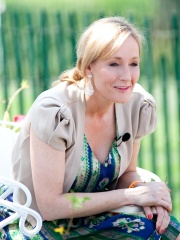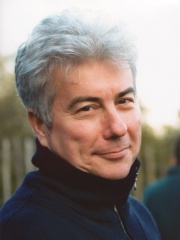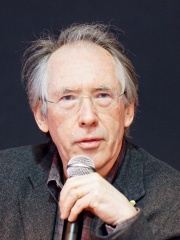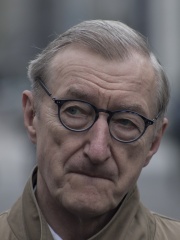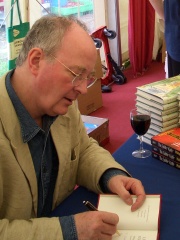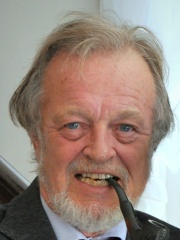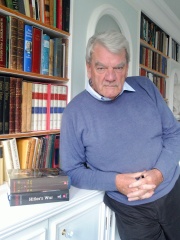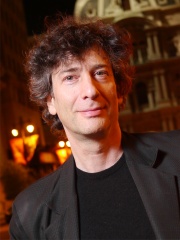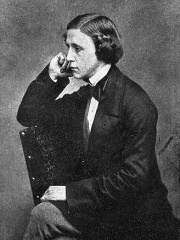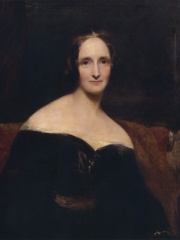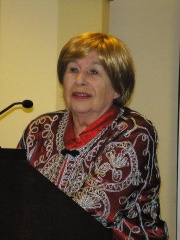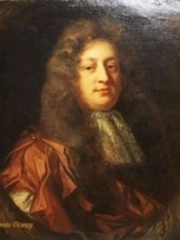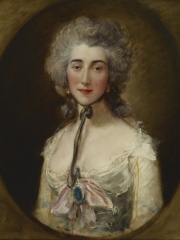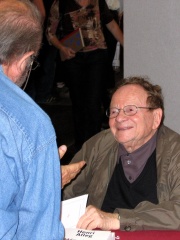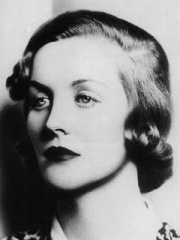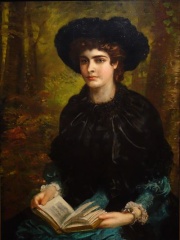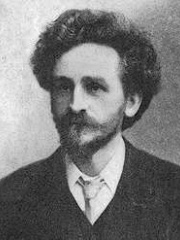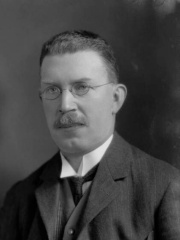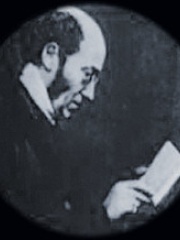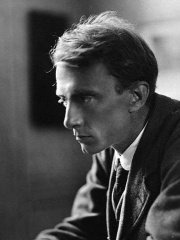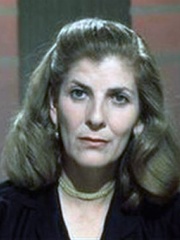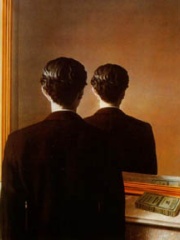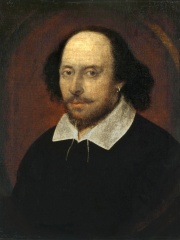
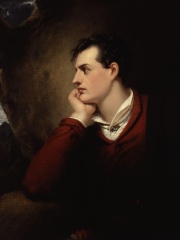

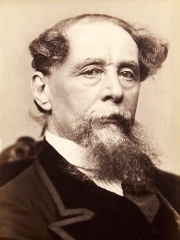
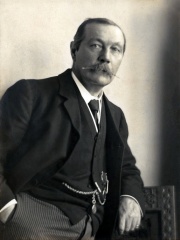
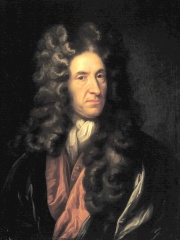
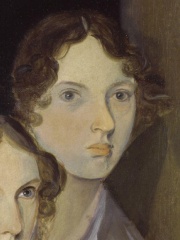
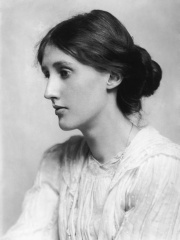
The Most Famous
WRITERS from United Kingdom
This page contains a list of the greatest British Writers. The pantheon dataset contains 7,302 Writers, 674 of which were born in United Kingdom. This makes United Kingdom the birth place of the 2nd most number of Writers.
Top 10
The following people are considered by Pantheon to be the top 10 most legendary British Writers of all time. This list of famous British Writers is sorted by HPI (Historical Popularity Index), a metric that aggregates information on a biography’s online popularity. Visit the rankings page to view the entire list of British Writers.

1. William Shakespeare (1564 - 1616)
With an HPI of 89.43, William Shakespeare is the most famous British Writer. His biography has been translated into 215 different languages on wikipedia.
William Shakespeare (bapt.Tooltip baptised 26 April 1564 – 23 April 1616) was an English playwright, poet and actor. He is widely regarded as the greatest writer in the English language and the world's pre-eminent dramatist. He is often called England's national poet and the "Bard of Avon" (or simply "the Bard"). His extant works, including collaborations, consist of some 39 plays, 154 sonnets, three long narrative poems, and a few other verses, some of uncertain authorship. His plays have been translated into every major living language and are performed more often than those of any other playwright. Shakespeare remains arguably the most influential writer in the English language, and his works continue to be studied and reinterpreted. Shakespeare was born and raised in Stratford-upon-Avon, Warwickshire. At the age of 18, he married Anne Hathaway, with whom he had three children: Susanna, and twins Hamnet and Judith. Sometime between 1585 and 1592, he began a successful career in London as an actor, writer, and part-owner ("sharer") of a playing company called the Lord Chamberlain's Men, later known as the King's Men after the ascension of King James VI of Scotland to the English throne. At age 49 (around 1613), he appears to have retired to Stratford, where he died three years later. Few records of Shakespeare's private life survive; this has stimulated considerable speculation about such matters as his physical appearance, his sexuality, his religious beliefs, and even certain fringe theories as to whether the works attributed to him were written by others.Shakespeare produced most of his known works between 1589 and 1613. His early plays were primarily comedies and histories and are regarded as some of the best works produced in these genres. He then wrote mainly tragedies until 1608, among them Hamlet, Romeo and Juliet, Othello, King Lear, and Macbeth, all considered to be among the finest works in the English language. In the last phase of his life, he wrote tragicomedies (also known as romances) and collaborated with other playwrights. Many of Shakespeare's plays were published in editions of varying quality and accuracy during his lifetime. However, in 1623, John Heminges and Henry Condell, two fellow actors and friends of Shakespeare's, published a more definitive text known as the First Folio, a posthumous collected edition of Shakespeare's dramatic works that includes 36 of his plays. Its Preface was a prescient poem by Ben Jonson, a former rival of Shakespeare, that hailed Shakespeare with the now famous epithet: "not of an age, but for all time".

2. Lord Byron (1788 - 1824)
With an HPI of 87.18, Lord Byron is the 2nd most famous British Writer. His biography has been translated into 146 different languages.
George Gordon Byron, 6th Baron Byron (22 January 1788 – 19 April 1824) was an English poet and peer. He is one of the major figures of the Romantic movement, and is regarded as being among the greatest of English poets. Among his best-known works are the lengthy narratives Don Juan and Childe Harold's Pilgrimage; much of his shorter lyrics in Hebrew Melodies also became popular. Byron was educated at Trinity College, Cambridge, before he travelled extensively across Europe to such places as Italy, where he lived for seven years in Venice, Ravenna, and Pisa after he was forced to flee England due to threats of lynching. During his stay in Italy, he would frequently visit his friend and fellow poet Percy Bysshe Shelley. Later in life, Byron joined the Greek War of Independence to fight the Ottoman Empire, and died leading a campaign during that war, for which Greeks revere him as a folk hero. He died in 1824, at the age of 36, from a fever contracted after the first and second sieges of Missolonghi. His one child conceived within marriage, Ada Lovelace, was a founding figure in the field of computer programming based on her notes for Charles Babbage's Analytical Engine. Byron's extramarital children include Allegra Byron, who died in childhood, and possibly Elizabeth Medora Leigh, daughter of his half-sister Augusta Leigh.

3. Agatha Christie (1890 - 1976)
With an HPI of 82.01, Agatha Christie is the 3rd most famous British Writer. Her biography has been translated into 137 different languages.
Dame Agatha Mary Clarissa Christie, Lady Mallowan, (née Miller; 15 September 1890 – 12 January 1976) was an English writer known for her 66 detective novels and 14 short story collections, particularly those revolving around fictional detectives Hercule Poirot and Miss Marple. She also wrote the world's longest-running play, the murder mystery The Mousetrap, which has been performed in the West End of London since 1952. A writer during the "Golden Age of Detective Fiction", Christie has been called the "Queen of Crime"—a moniker which is now trademarked by her estate—or the "Queen of Mystery". She also wrote six novels under the pseudonym Mary Westmacott. In 1971, she was made a Dame (DBE) by Queen Elizabeth II for her contributions to literature. Guinness World Records lists Christie as the best-selling fiction writer of all time, her novels having sold more than two billion copies.Christie was born into a wealthy upper-middle-class family in Torquay, Devon, and was largely home-schooled. She was initially an unsuccessful writer with six consecutive rejections, but this changed in 1920 when The Mysterious Affair at Styles, featuring detective Hercule Poirot, was published. Her first husband was Archibald Christie; they married in 1914 and had one child before divorcing in 1928. Following the breakdown of her marriage and the death of her mother in 1926 she made international headlines by going missing for eleven days. During both World Wars, she served in hospital dispensaries, acquiring a thorough knowledge of the poisons that featured in many of her novels, short stories, and plays. Following her marriage to archaeologist Max Mallowan in 1930, she spent several months each year on digs in the Middle East and used her first-hand knowledge of this profession in her fiction. According to UNESCO's Index Translationum, she remains the most-translated individual author. Her novel And Then There Were None is one of the top-selling books of all time, with approximately 100 million copies sold. Christie's stage play The Mousetrap holds the world record for the longest initial run. It opened at the Ambassadors Theatre in the West End on 25 November 1952, and by 2018 there had been more than 27,500 performances. The play was temporarily closed in 2020 because of COVID-19 lockdowns in London before it reopened in 2021. In 1955, Christie was the first recipient of the Mystery Writers of America's Grand Master Award. Later that year, Witness for the Prosecution received an Edgar Award for best play. In 2013, she was voted the best crime writer and The Murder of Roger Ackroyd the best crime novel ever by 600 professional novelists of the Crime Writers' Association. In 2015, And Then There Were None was named the "World's Favourite Christie" in a vote sponsored by the author's estate. Many of Christie's books and short stories have been adapted for television, radio, video games, and graphic novels. More than 30 feature films are based on her work.

4. Charles Dickens (1812 - 1870)
With an HPI of 81.06, Charles Dickens is the 4th most famous British Writer. His biography has been translated into 161 different languages.
Charles John Huffam Dickens (; 7 February 1812 – 9 June 1870) was an English novelist and social critic who created some of the world's best-known fictional characters, and is regarded by many as the greatest novelist of the Victorian era. His works enjoyed unprecedented popularity during his lifetime and, by the 20th century, critics and scholars had recognised him as a literary genius. His novels and short stories are widely read today.Born in Portsmouth, Dickens left school at age 12 to work in a boot-blacking factory when his father John was incarcerated in a debtors' prison. After three years, he returned to school before beginning his literary career as a journalist. Dickens edited a weekly journal for 20 years; wrote 15 novels, five novellas, hundreds of short stories and nonfiction articles; lectured and performed readings extensively; was an indefatigable letter writer; and campaigned vigorously for children's rights, education, and other social reforms. Dickens's literary success began with the 1836 serial publication of The Pickwick Papers, a publishing phenomenon—thanks largely to the introduction of the character Sam Weller in the fourth episode—that sparked Pickwick merchandise and spin-offs. Within a few years, Dickens had become an international literary celebrity, famous for his humour, satire, and keen observation of character and society. His novels, most of them published in monthly or weekly instalments, pioneered the serial publication of narrative fiction, which became the dominant Victorian mode for novel publication. Cliffhanger endings in his serial publications kept readers in suspense. The instalment format allowed Dickens to evaluate his audience's reaction, and he often modified his plot and character development based on such feedback. For example, when his wife's chiropodist expressed distress at the way Miss Mowcher in David Copperfield seemed to reflect her own disabilities, Dickens improved the character with positive features. His plots were carefully constructed and he often wove elements from topical events into his narratives. Masses of the illiterate poor would individually pay a halfpenny to have each new monthly episode read to them, opening up and inspiring a new class of readers.His 1843 novella A Christmas Carol remains especially popular and continues to inspire adaptations in every creative medium. Oliver Twist and Great Expectations are also frequently adapted and, like many of his novels, evoke images of early Victorian London. His 1859 novel A Tale of Two Cities (set in London and Paris) is his best-known work of historical fiction. The most famous celebrity of his era, he undertook, in response to public demand, a series of public reading tours in the later part of his career. The term Dickensian is used to describe something that is reminiscent of Dickens and his writings, such as poor social or working conditions, or comically repulsive characters.
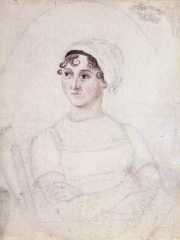
5. Jane Austen (1775 - 1817)
With an HPI of 80.46, Jane Austen is the 5th most famous British Writer. Her biography has been translated into 136 different languages.
Jane Austen ( OST-in, AW-stin; 16 December 1775 – 18 July 1817) was an English novelist known primarily for her six novels, which implicitly interpret, critique, and comment upon the British landed gentry at the end of the 18th century. Austen's plots often explore the dependence of women on marriage for the pursuit of favourable social standing and economic security. Her works are an implicit critique of the novels of sensibility of the second half of the 18th century and are part of the transition to 19th-century literary realism. Her deft use of social commentary, realism and biting irony have earned her acclaim among critics and scholars. The anonymously published Sense and Sensibility (1811), Pride and Prejudice (1813), Mansfield Park (1814), and Emma (1816), were a modest success but brought her little fame in her lifetime. She wrote two other novels—Northanger Abbey and Persuasion, both published posthumously in 1817—and began another, eventually titled Sanditon, but died before its completion. She also left behind three volumes of juvenile writings in manuscript, the short epistolary novel Lady Susan, and the unfinished novel The Watsons. Since her death Austen's novels have rarely been out of print. A significant transition in her reputation occurred in 1833, when they were republished in Richard Bentley's Standard Novels series (illustrated by Ferdinand Pickering and sold as a set). They gradually gained wide acclaim and popular readership. In 1869, fifty-two years after her death, her nephew's publication of A Memoir of Jane Austen introduced a compelling version of her writing career and supposedly uneventful life to an eager audience. Her work has inspired a large number of critical essays and has been included in many literary anthologies. Her novels have also inspired many films, including 1940's Pride and Prejudice, 1995's Sense and Sensibility and 2016's Love & Friendship.

6. Arthur Conan Doyle (1859 - 1930)
With an HPI of 79.10, Arthur Conan Doyle is the 6th most famous British Writer. His biography has been translated into 120 different languages.
Sir Arthur Ignatius Conan Doyle (22 May 1859 – 7 July 1930) was a British writer and physician. He created the character Sherlock Holmes in 1887 for A Study in Scarlet, the first of four novels and fifty-six short stories about Holmes and Dr. Watson. The Sherlock Holmes stories are milestones in the field of crime fiction. Doyle was a prolific writer; other than Holmes stories, his works include fantasy and science fiction stories about Professor Challenger, and humorous stories about the Napoleonic soldier Brigadier Gerard, as well as plays, romances, poetry, non-fiction, and historical novels. One of Doyle's early short stories, "J. Habakuk Jephson's Statement" (1884), helped to popularise the mystery of the Mary Celeste.

7. Daniel Defoe (1660 - 1731)
With an HPI of 78.02, Daniel Defoe is the 7th most famous British Writer. His biography has been translated into 100 different languages.
Daniel Defoe (; born Daniel Foe; c. 1660 – 24 April 1731) was an English novelist, journalist, merchant, pamphleteer and spy. He is most famous for his novel Robinson Crusoe, published in 1719, which is claimed to be second only to the Bible in its number of translations. He has been seen as one of the earliest proponents of the English novel, and helped to popularise the form in Britain with others such as Aphra Behn and Samuel Richardson. Defoe wrote many political tracts, was often in trouble with the authorities, and spent a period in prison. Intellectuals and political leaders paid attention to his fresh ideas and sometimes consulted him. Defoe was a prolific and versatile writer, producing more than three hundred works—books, pamphlets, and journals—on diverse topics, including politics, crime, religion, marriage, psychology and the supernatural. He was also a pioneer of business journalism and economic journalism.

8. Emily Brontë (1818 - 1848)
With an HPI of 77.35, Emily Brontë is the 8th most famous British Writer. Her biography has been translated into 94 different languages.
Emily Jane Brontë (, commonly ; 30 July 1818 – 19 December 1848) was an English novelist and poet who is best known for her only novel, Wuthering Heights, now considered a classic of English literature. She also published a book of poetry with her sisters Charlotte and Anne titled Poems by Currer, Ellis and Acton Bell with her own poems finding regard as poetic genius. Emily was the second-youngest of the four surviving Brontë siblings, between the youngest Anne and her brother Branwell. She published under the pen name Ellis Bell.

9. Virginia Woolf (1882 - 1941)
With an HPI of 76.96, Virginia Woolf is the 9th most famous British Writer. Her biography has been translated into 109 different languages.
Adeline Virginia Woolf (; née Stephen; 25 January 1882 – 28 March 1941) was an English writer. She is considered one of the most important modernist 20th-century authors. She pioneered the use of stream of consciousness as a narrative device. Woolf was born into an affluent household in South Kensington, London. She was the seventh child of Julia Prinsep Jackson and Leslie Stephen in a blended family of eight that included the modernist painter Vanessa Bell. She was home-schooled in English classics and Victorian literature from a young age. From 1897 to 1901, she attended the Ladies' Department of King's College London. There, she studied classics and history, coming into contact with early reformers of women's higher education and the women's rights movement. After her father's death in 1904, the Stephen family moved from Kensington to the more bohemian Bloomsbury, where, in conjunction with the brothers' intellectual friends, they formed the artistic and literary Bloomsbury Group. In 1912, she married Leonard Woolf, and in 1917, the couple founded the Hogarth Press, which published much of her work. They rented a home in Sussex and permanently settled there in 1940. Woolf began writing professionally in 1900. During the inter-war period, Woolf was an important part of London's literary and artistic society. In 1915, she published her first novel, The Voyage Out, through her half-brother's publishing house, Gerald Duckworth and Company. Her best-known works include the novels Mrs Dalloway (1925), To the Lighthouse (1927) and Orlando (1928). She is also known for her essays, such as A Room of One's Own (1929). Woolf became one of the central subjects of the 1970s movement of feminist criticism. Her works, translated into more than 50 languages, have attracted attention and widespread commentary for inspiring feminism. A large body of writing is dedicated to her life and work. She has been the subject of plays, novels, and films. Woolf is commemorated by statues, societies dedicated to her work, and a building at the University of London.
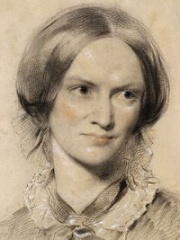
10. Charlotte Brontë (1816 - 1855)
With an HPI of 75.98, Charlotte Brontë is the 10th most famous British Writer. Her biography has been translated into 87 different languages.
Charlotte Brontë (, commonly ; 21 April 1816 – 31 March 1855) was an English novelist and poet, the eldest of the three Brontë sisters who survived into adulthood and whose novels became classics of English literature. She is best known for her novel Jane Eyre, which she published under the gender neutral pen name Currer Bell. Jane Eyre went on to become a success in publication, and is widely held in high regard in the gothic fiction genre of literature. She enlisted in school at Roe Head, Mirfield, in January 1831, aged 14 years. She left the year after to teach her sisters, Emily and Anne, at home, returning in 1835 as a governess. In 1839, she undertook the role of governess for the Sidgwick family, but left after a few months to return to Haworth, where the sisters opened a school but failed to attract pupils. Instead, they turned to writing and they each first published in 1846 under the pseudonyms of Currer, Ellis, and Acton Bell. Although her first novel, The Professor, was rejected by publishers, her second novel, Jane Eyre, was published in 1847. The sisters admitted to their Bell pseudonyms in 1848, and by the following year were celebrated in London literary circles. Charlotte Brontë was the last to die of all her siblings. She became pregnant shortly after her wedding in June 1854 but died on 31 March 1855, almost certainly from hyperemesis gravidarum, a complication of pregnancy which causes excessive nausea and vomiting.
People
Pantheon has 759 people classified as British writers born between 518 and 1994. Of these 759, 175 (23.06%) of them are still alive today. The most famous living British writers include Anna Wintour, J. K. Rowling, and Ken Follett. The most famous deceased British writers include William Shakespeare, Lord Byron, and Agatha Christie. As of April 2024, 85 new British writers have been added to Pantheon including Marion Chesney, Thomas Otway, and Grace Elliott.
Living British Writers
Go to all RankingsAnna Wintour
1949 - Present
HPI: 72.49
J. K. Rowling
1965 - Present
HPI: 71.99
Ken Follett
1949 - Present
HPI: 69.22
Ian McEwan
1948 - Present
HPI: 64.80
Julian Barnes
1946 - Present
HPI: 63.07
Frederick Forsyth
1938 - Present
HPI: 62.92
Philip Pullman
1946 - Present
HPI: 62.88
James May
1963 - Present
HPI: 62.45
Bernard Cornwell
1944 - Present
HPI: 60.95
Sarah, Duchess of York
1959 - Present
HPI: 60.30
David Irving
1938 - Present
HPI: 60.23
Neil Gaiman
1960 - Present
HPI: 59.78
Deceased British Writers
Go to all RankingsWilliam Shakespeare
1564 - 1616
HPI: 89.43
Lord Byron
1788 - 1824
HPI: 87.18
Agatha Christie
1890 - 1976
HPI: 82.01
Charles Dickens
1812 - 1870
HPI: 81.06
Jane Austen
1775 - 1817
HPI: 80.46
Arthur Conan Doyle
1859 - 1930
HPI: 79.10
Daniel Defoe
1660 - 1731
HPI: 78.02
Emily Brontë
1818 - 1848
HPI: 77.35
Virginia Woolf
1882 - 1941
HPI: 76.96
Charlotte Brontë
1816 - 1855
HPI: 75.98
Lewis Carroll
1832 - 1898
HPI: 75.93
Mary Shelley
1797 - 1851
HPI: 75.07
Newly Added British Writers (2024)
Go to all RankingsMarion Chesney
1936 - 2019
HPI: 53.54
Thomas Otway
1652 - 1685
HPI: 53.13
Grace Elliott
1754 - 1823
HPI: 51.80
Henri Alleg
1921 - 2013
HPI: 51.52
Diana Mosley
1910 - 2003
HPI: 51.09
Constance Lloyd
1858 - 1898
HPI: 51.01
James Allen
1864 - 1912
HPI: 50.35
Reynold A. Nicholson
1868 - 1945
HPI: 49.48
William Thoms
1803 - 1885
HPI: 49.38
Edward Thomas
1878 - 1917
HPI: 48.44
Elizabeth Jane Howard
1923 - 2014
HPI: 48.35
Edward James
1907 - 1984
HPI: 48.24
Overlapping Lives
Which Writers were alive at the same time? This visualization shows the lifespans of the 25 most globally memorable Writers since 1700.


